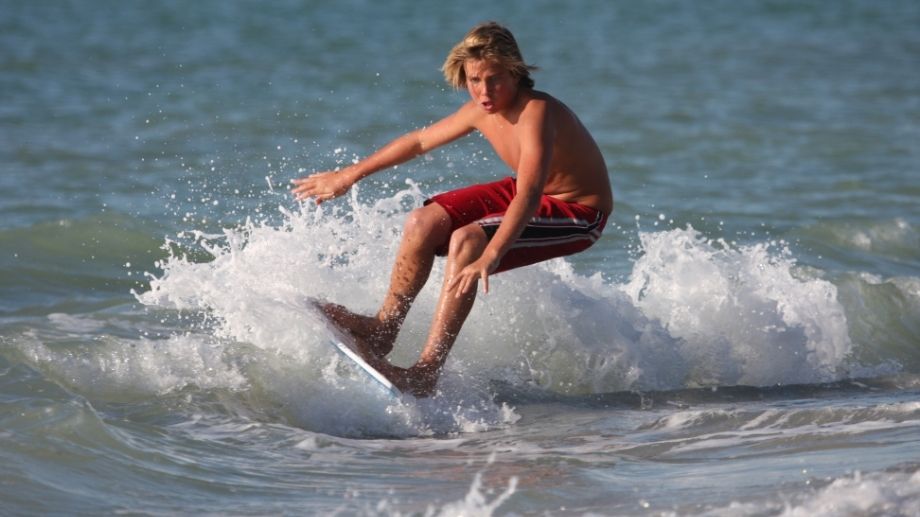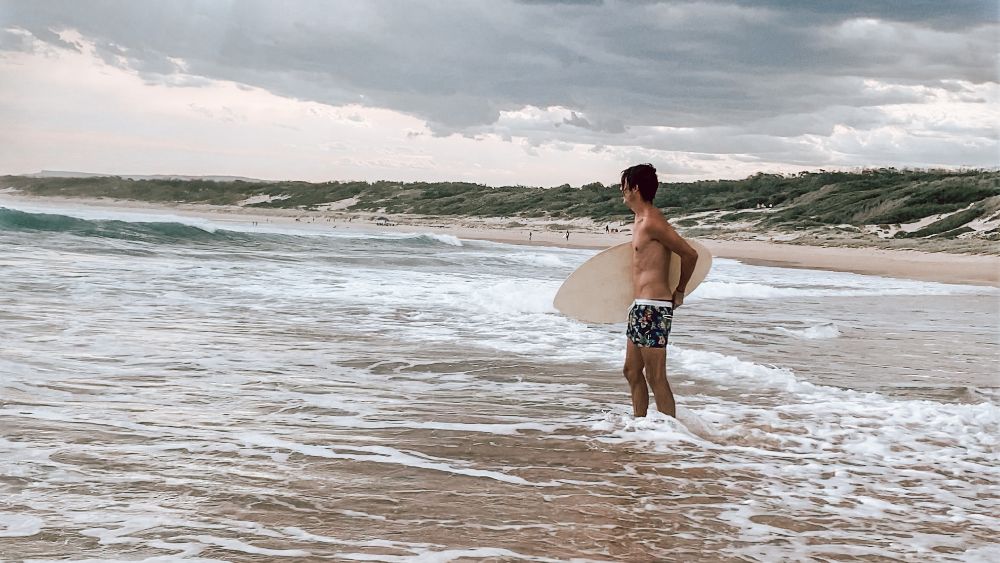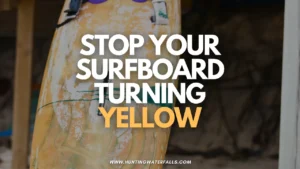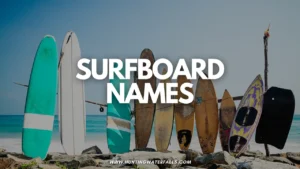Skimboards are often seen at the beach, but they are rarely taken far out to sea. Skimboarders tend to stay close to shore, but is that because skimboards don't float well? Do skimboards float?
Skimboards do float. Foam skimboards are much more buoyant than wooden skimboards which are heavier and don't float as well. However, occasionally skimboards can get stuck against the sand underneath the water
Skimboards float easily on top of waves and are coated in materials that help them float and skim. More information about said materials is below.
Foam Skimboards – How They Float

Foam skimboards are skimboards that are specifically designed for riding waves. They have a foam core that is often made of two types of foam which creates buoyancy as well as rigidity.
The foam is full of lots of tiny air bubbles which makes it float and stops the skimboard from sinking.
Because foam isn't a very durable material, nor is it smooth for optimal skimming, skimboards are then coated in fiberglass and epoxy/carbon fibre in order to strengthen them and make them smooth so they can skim over the water easily.
Foam skimboards are made for beginner, intermediate and advanced skimboarders. In my list of the best skimboards for beginners I highly recommend foam skimboards and they are bigger and float better allowing you to skim further.
Make sure you determine what your skill level is before you purchase a skimboard and when it becomes extremely easy to ride it, purchase a new one meant for a more experienced skimboarder.
Although skimboards need to be lightweight so people can ride the waves safely, they need to be heavy enough to not be blown away in the wind. Foam skimboards typically weigh between 5 and 10 pounds.
When considering a foam skimboard, tell the salesperson your height and weight. If you are giving the skimboard to someone else, tell the salesperson their height and weight. The size of the skimboard that you need is partially determined by your height and weight.
The thickness of the skimboard is also something that needs to be considered. The thicker the board is, the more float the skimboard will have, which means you can skim further. The thicker a skimboard is, the faster the skimboard will go. The most common thicknesses used are 3/4″, and 5/8″.
Beginner skimboarders often have thick skimboards because of how buoyant they are, while experienced skimboarders have thinner skimboards. This is because thinner skimboards allow you to do sharper turns and make wave riding easier.
Even though foam skimboards float fairly well they don't float as well as surfboards. It is very difficult to surf on a skimboard like you would a surfboard and paddling into waves is near impossible. There are a lot of differences when it comes to surfing and skimboarding and you need different boards for each.
Unfortunately, foam skimboards are expensive. A small skimboard for a beginner skimboarder costs at least $100. You can rent skimboards at most beach rental shops, but the cost to rent a skimboard varies depending on the shop's rates, how popular skimboards are at that beach, and the size of skimboard you need to rent.
Wood Skimboards – How They Float

Wooden skimboards do float, but they don't float nearly as well as foam skimboards.
Wood skimboards are usually used for flatland skimboarding rather than wave skimboarding and are generally aimed at beginners and non-serious skimboarders simply due to the fact they are extremely cheap and a great way to get started skimboarding for not a lot of money.
The weight of wood skimboards compared to the size is much heavier than foam skimboards. The weight causes them to sink slightly while on the waves, and skimboarders can't ride the waves if their board is slightly below the surface.
Wood skimboards are designed to skim just over the surface of the shore, where the sand meets the water and the water is ankle-deep.
If wood skimboards are taken out into the waves because of the weight, size and flexibility it is difficult to catch to the waves and ride back with them. You just loose way too much speed and fall off the back of the wave.
Wooden skimboards are prone to sinking and getting stuck in the sand, which is why some people might think they don't float.
Wood skimboards are typically avoided by experienced skimboarders but if you're interested in getting one as a cheap way to get started check out my ultimate guide to wooden skimboards.
Beginner skimboarders who don't want to ride the waves should purchase a wood skimboard rather than a foam skimboard. This is almost entirely due to the cost of the board. Foam skimboards are usually better than wooden skimboards in almost every other way.
It is also recommended that depending on what specific flatland skimming a person wishes to do, they consider using a longer board when they are planning on skimboarding a longer distance. If you are planning on doing tricks, pick a shorter wood skimboard as the shorter the wood skimboard is, the easier it is to flip and spin. Click here to learn about different skimboard shapes and how to choose the right one.
There are different kinds of shapes when it comes to wooden skimboards. You can even design your own wood skimboard shape and size.
However, there are basic shapes and designs that do well in different aspects of skimboarding. The longer boards, like the ovals and teardrop-shaped skimboards, are better for distance rides on the shore. In general, the shorter and wider boards are better for doing tricks and riding rails.
Both wood and foam skimboards float well and are made to be used on the water, but foam skimboards float extremely well. Talk to a professional before you decide what type and size of skimboard to purchase.




